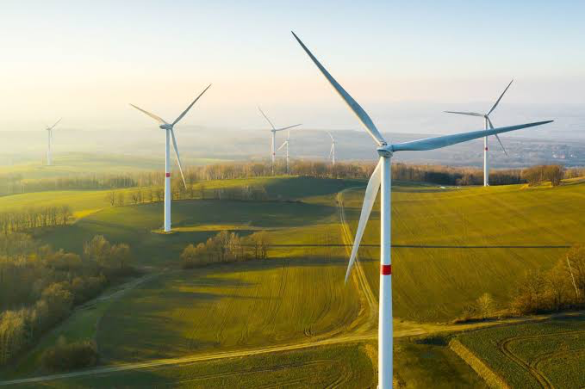Installed wind power capacity in Africa has experienced significant growth since the early 2000s. According to the Global Wind Energy Council (GWEC), there have been notable increases in annual installations, with over 800MW added in recent years. The year 2024 marked the peak year for installation, with a record 1,132MW of wind power capacity added. This surge reflects the continent’s escalating commitment to renewable energy as a key component of its energy strategy.
The primary driver behind the proliferation of wind farms across Africa is the urgent need for additional capacity to enhance electricity supply. Many African countries are in dire need of expanded energy access and supply, and wind power is an attractive solution due to its renewable nature and capacity for large-scale energy production. For example, the Lake Turkana wind farm in Kenya now contributes to 17% of the country’s installed capacity, while the Taiba N’diaye wind farm in Senegal has boosted the national capacity by 15%.
Diversification of energy sources is another crucial factor. Historically, most African nations have heavily relied on hydropower. However, climate change-induced droughts and aging infrastructure are prompting a shift towards more reliable and sustainable energy sources like wind. This transition is partly motivated by the need to reduce dependency on volatile fossil fuel markets and to lower the carbon footprint of the energy sector.
Egypt is a country that has historically relied on natural gas for energy production. However, it is now actively pursuing wind and solar projects to increase the proportion of renewable sources in its energy mix to 42% by 2030. This is representative of a larger trend in the region where countries are diversifying their energy production to include more renewable sources.
Integrating wind power into the grid can also help stabilize it. Wind and solar power can complement each other, with solar generating power during the day when wind might be weaker, and wind providing power at night when solar is not active. For instance, the Mwenga Wind Farm in Tanzania has a hybrid system that works in conjunction with other sources like hydropower to create a more stable and dependable energy supply.
Additionally, many industries across Africa are adopting captive wind power solutions to meet their energy needs. This shift is motivated by the desire to reduce costs and minimize the environmental impact of their operations. For example, Morocco’s cement and fertilizer industries, as well as various mining operations in Madagascar, Mali, and South Africa, are notable examples of this trend.
Looking to the future, the development of the Continental Power System Masterplan by AUDA-NEPAD highlights an ambitious goal for wind energy, which is expected to grow from about 4% of the electricity mix in 2023 to 23% by 2040. This plan emphasizes the development of mostly onshore wind projects, with a smaller contribution from offshore wind anticipated at this stage.
The technical potential for wind power on the continent is immense. Studies supported by the European Union Global Technical Assistance Facility (EU-TAF) for Sustainable Energy have identified up to 3.38TW of potential wind power, with 441GW of onshore wind capacity readily developable—more than twice the capacity projected for 2040.
Significant future growth in the wind sector is also expected to be driven by factors like green hydrogen production, e-mobility, regional power pools, and the re-powering of existing wind farms. As technology improves and older wind farms reach the end of their operational lives, there is considerable potential for upgrading these sites with newer, more efficient turbines that offer higher energy yields and improved environmental resilience.
The Kouidia Al Baida wind farm in Morocco, for example, is set to undergo re-powering from a 54MW to a 120MW facility, showcasing the trend towards enhancing existing infrastructure to meet growing energy needs.
Wind power is positioned as a cornerstone of Africa’s future energy landscape, driven by the need for diversified, reliable, and sustainable energy sources. With supportive policies and continued investment, wind energy can significantly contribute to meeting the continent’s energy demands while facilitating economic growth and environmental sustainability.
Source: ESI Africa



